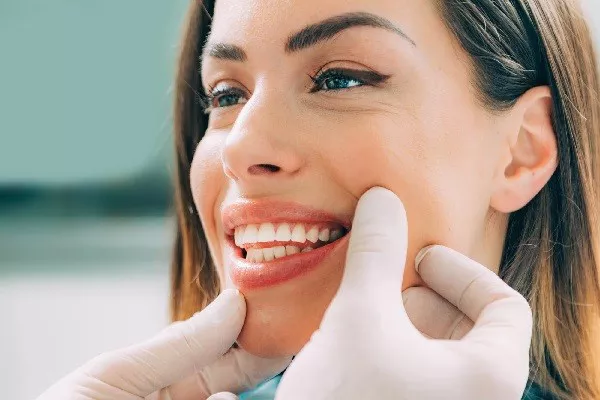If you’re experiencing tooth filling pain, it’s essential to take immediate action to alleviate discomfort. Begin by rinsing your mouth with warm salt water, as this can help to reduce inflammation and cleanse the area around the filling. Over-the-counter pain relievers like ibuprofen can also be effective in managing pain and reducing swelling. However, be sure to follow the dosage instructions provided on the packaging and consult with a healthcare professional if you have any underlying health conditions or concerns.
Understanding the Pain
Tooth filling pain can occur for several reasons, and understanding the underlying cause is crucial in finding the appropriate treatment. Sensitivity after a filling is common and usually subsides within a few days as the tooth adjusts to the new restoration. However, if the pain persists or worsens over time, it may indicate other issues such as:
- High Points in the Filling: Sometimes, the filling may be too high, causing interference with your bite. This can result in increased pressure on the tooth, leading to pain and discomfort.
- Further Decay: In some cases, the tooth decay may have progressed beyond the filling, causing irritation or infection in the surrounding tissue. This can result in persistent pain and sensitivity.
- Nerve Irritation: If the filling is close to the nerve of the tooth, it may cause irritation or inflammation, leading to discomfort.
When to Contact a Dentist
While mild sensitivity after a filling is normal, persistent or severe pain should not be ignored. If you experience ongoing discomfort or if the pain worsens over time, it’s essential to contact your dentist as soon as possible. When calling to schedule an appointment, be sure to provide detailed information about your symptoms, including when the pain started, its intensity, and any factors that exacerbate or alleviate it. This will help your dentist assess the situation more effectively and determine the appropriate course of action.
Temporary Solutions
While awaiting your dental appointment, there are several temporary solutions you can try to alleviate tooth filling pain:
- Dental Wax: Applying dental wax to the surface of the filling can help to protect it from further irritation and reduce sensitivity when chewing.
- Avoid Chewing on the Affected Side: Minimize pressure on the affected tooth by avoiding chewing on that side of your mouth. This can help to prevent exacerbating the pain.
- Soft Diet: Stick to soft foods that are easy to chew and won’t put undue pressure on the filling. Avoid hard, crunchy, or sticky foods that could dislodge or damage the restoration.
Long-Term Care
Proper long-term care and maintenance of fillings are essential for preventing future pain and complications. Here are some tips to help preserve the integrity of your dental restorations:
- Maintain Good Oral Hygiene: Brush your teeth at least twice a day and floss daily to remove plaque and food particles that can contribute to decay. Use a fluoride toothpaste to strengthen enamel and protect against cavities.
- Regular Dental Check-Ups: Schedule regular dental check-ups and cleanings to monitor the condition of your fillings and detect any issues early on. Your dentist can assess the integrity of your restorations and address any concerns before they escalate.
- Avoid Sugary and Acidic Foods: Limit your consumption of sugary and acidic foods and beverages, as these can weaken enamel and increase the risk of decay. Opt for healthier alternatives like fruits, vegetables, and dairy products to support oral health.
Prevention Tips
Preventing the need for future fillings involves adopting good oral hygiene habits and making healthy lifestyle choices. Here are some tips to help reduce your risk of tooth decay:
- Brush and Floss Regularly: Brush your teeth at least twice a day and floss daily to remove plaque and bacteria from hard-to-reach areas.
- Limit Sugary Snacks and Drinks: Reduce your intake of sugary snacks and beverages, as these can contribute to tooth decay. If you do indulge, be sure to rinse your mouth with water afterward and brush your teeth as soon as possible.
- Drink Plenty of Water: Water helps to rinse away food particles and bacteria from the mouth, reducing the risk of decay. Aim to drink plenty of water throughout the day, especially after meals and snacks.
Professional Treatment Options
If tooth filling pain persists despite temporary measures, your dentist may recommend professional treatment options to address the underlying issue. These may include:
- Filling Adjustment: If the pain is due to a high point in the filling, your dentist can adjust the restoration to improve your bite and alleviate discomfort.
- Root Canal Therapy: If the pain is caused by deep decay or nerve irritation, a root canal may be necessary to remove infected tissue and restore the health of the tooth.
- Replacement of the Filling: In some cases, the filling may need to be replaced if it is worn, damaged,or no longer sealing the tooth effectively. Your dentist can assess the condition of the filling and recommend the most appropriate course of action.
FAQs About Tooth Filling Pain
1. Why is my tooth filling hurting?
Tooth filling pain can occur for several reasons. It may be due to sensitivity after the filling procedure, irritation of the nerve in the tooth, high points in the filling interfering with your bite, or further decay around the filling.
2. How do you make filling pain go away?
To alleviate filling pain, you can try rinsing your mouth with warm salt water, taking over-the-counter pain relievers like ibuprofen, using dental wax to protect the filling, avoiding chewing on the affected side, and sticking to a soft diet. However, if the pain persists or worsens, it’s essential to contact your dentist for further evaluation and treatment.
3. How do you know if a filling is bad?
Signs of a bad filling include persistent pain or sensitivity, swelling or inflammation around the tooth, visible cracks or damage to the filling, a gritty or rough texture when you run your tongue over it, and changes in the color or appearance of the filling. If you experience any of these symptoms, consult your dentist for assessment and possible replacement of the filling.
4. Can I feel my filling when I bite down?
Feeling your filling when you bite down can indicate that the restoration is too high and interfering with your bite. This can cause increased pressure on the tooth, leading to pain and discomfort. If you notice this sensation, contact your dentist to have the filling adjusted to improve your bite and alleviate the discomfort.






























